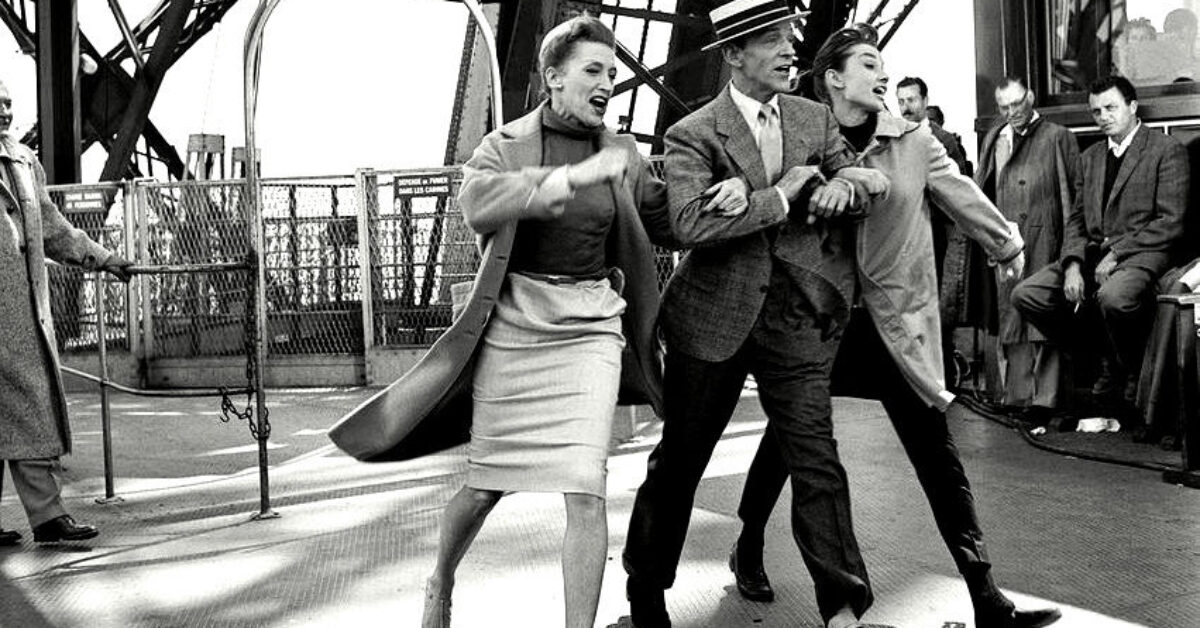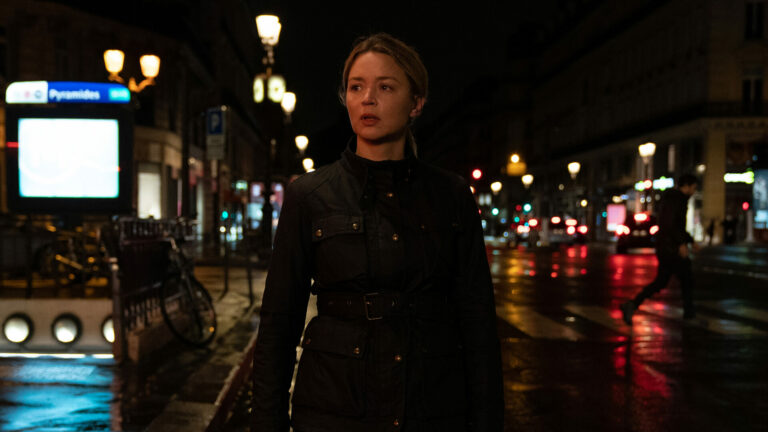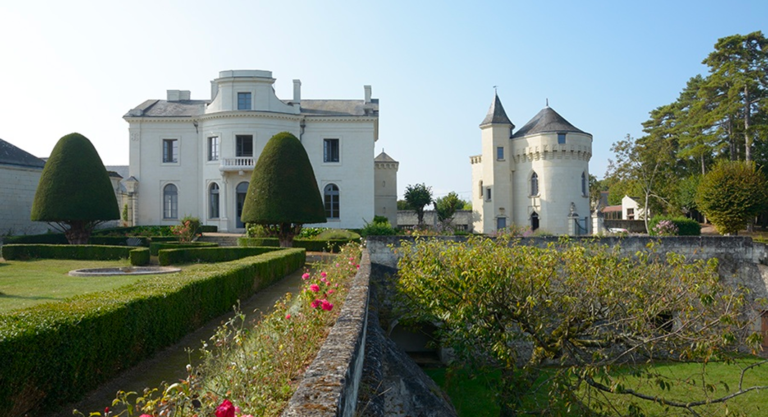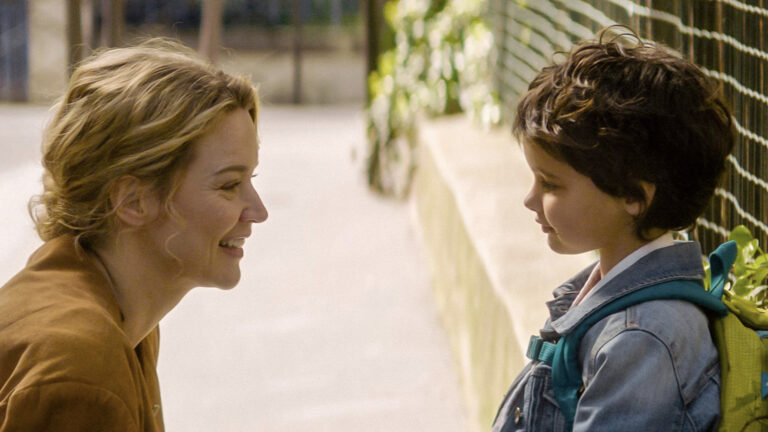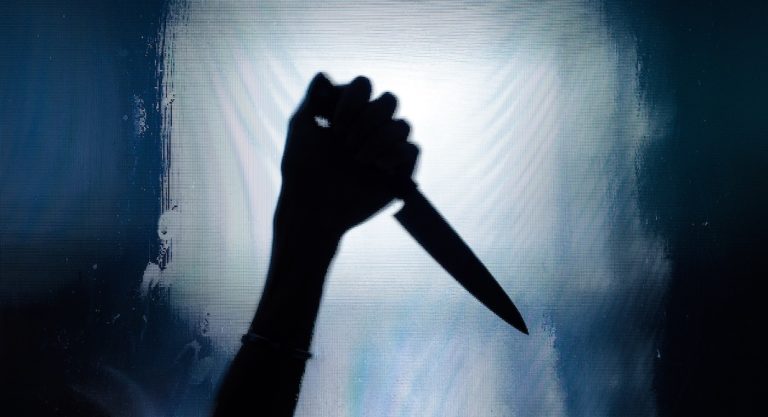Even if your goal isn’t Set Jetting (the trend of traveling to film and TV series locations), you’re bound to come across film locations in Paris, one of the most filmed cities in the world. According to vividmaps, the Eiffel Tower ranks seventh in the top ten most-filmed locations in the world (with the Parisian monument featured in ninety-five movies by their count).
Films that feature the Eiffel Tower
The first motion picture of the Eiffel Tower was made by the Lumière Brothers, credited with inventing the film projector which gave rise to the motion picture industry. Their stunning forty-seven second film taken from inside the ascending elevator of the Eiffel tower was shot in 1898, just ten years after the tower was built. In Funny Face, the 1957 classic Hollywood musical movie, Audrey Hepburn and Fred Astaire do their iconic musical dance number on the Tower’s upper platform. The 400 Blows (Truffaut), Men in Black 4, and the James Bond movie A View to a Kill are among the many others. Around Paris these days, I’m seeing the Eiffel Tower prominently featured in the poster for the Netflix Murder Mystery 2 movie with Jennifer Aniston and Adam Sandler, shot in large part in Paris.
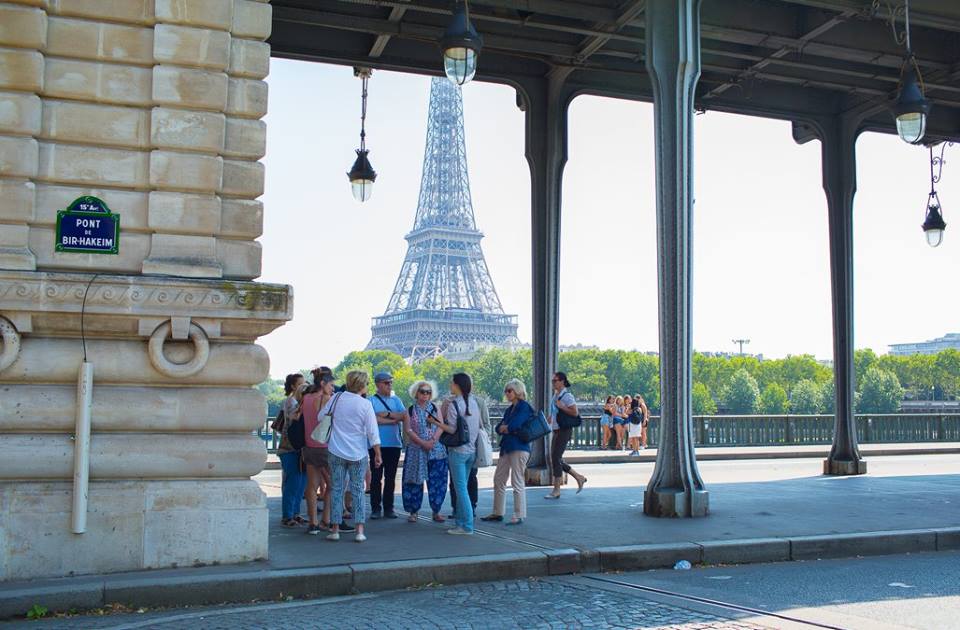
Paris Film Locations
Movies shot in Paris have played an incalculable role in shaping our collective image of Paris by creating a poetic sense of place that may be part movie myth, yet is founded on a very real romantic sensibility. That so much of the city – its landmarks, parks, and architecture – seems so little changed in movies over the decades, highlights that breathtaking sense of timelessness about Paris that is at the core of her allure. While many of the early Paris film locations have disappeared, plenty still exist. Movie Tourist is a terrific website where you can see photos of Paris movie locations then and now.
But while I do have a great appreciation for the city’s enduring self, looking for how Paris has changed in films is at the root of my fascination with French Film Noir. This genre of the 50s and 60s was often shot in black and white, with plots revolving around criminals, cops, and vamps, underwritten with a strong current of irony and existential angst. This style evokes a gritty Paris as conjured up in classic crime capers like Touchez pas aux Grisbi and Rififi. The latter’s plot centers on a jewelry store heist, shot in a building on Rue de la Paix that still houses a jewelry store. Louis Malle’s Elevator to the Gallows, considered both Noir as well as classic French New Wave, features a memorable scene where Jeanne Moreau is frantically wandering down the Champs Élysées at night looking for her missing lover, with the soundtrack blasting Miles Davis’s breathtaking score (which he improvised for the entire film in one take). The Champs Élysées also makes an appearance in dozens of films, including: Taken, Breathless, Is Paris Burning, and Au Revoir là-haut, a 2017 award winning and visually arresting period film set in post-World War I Paris.
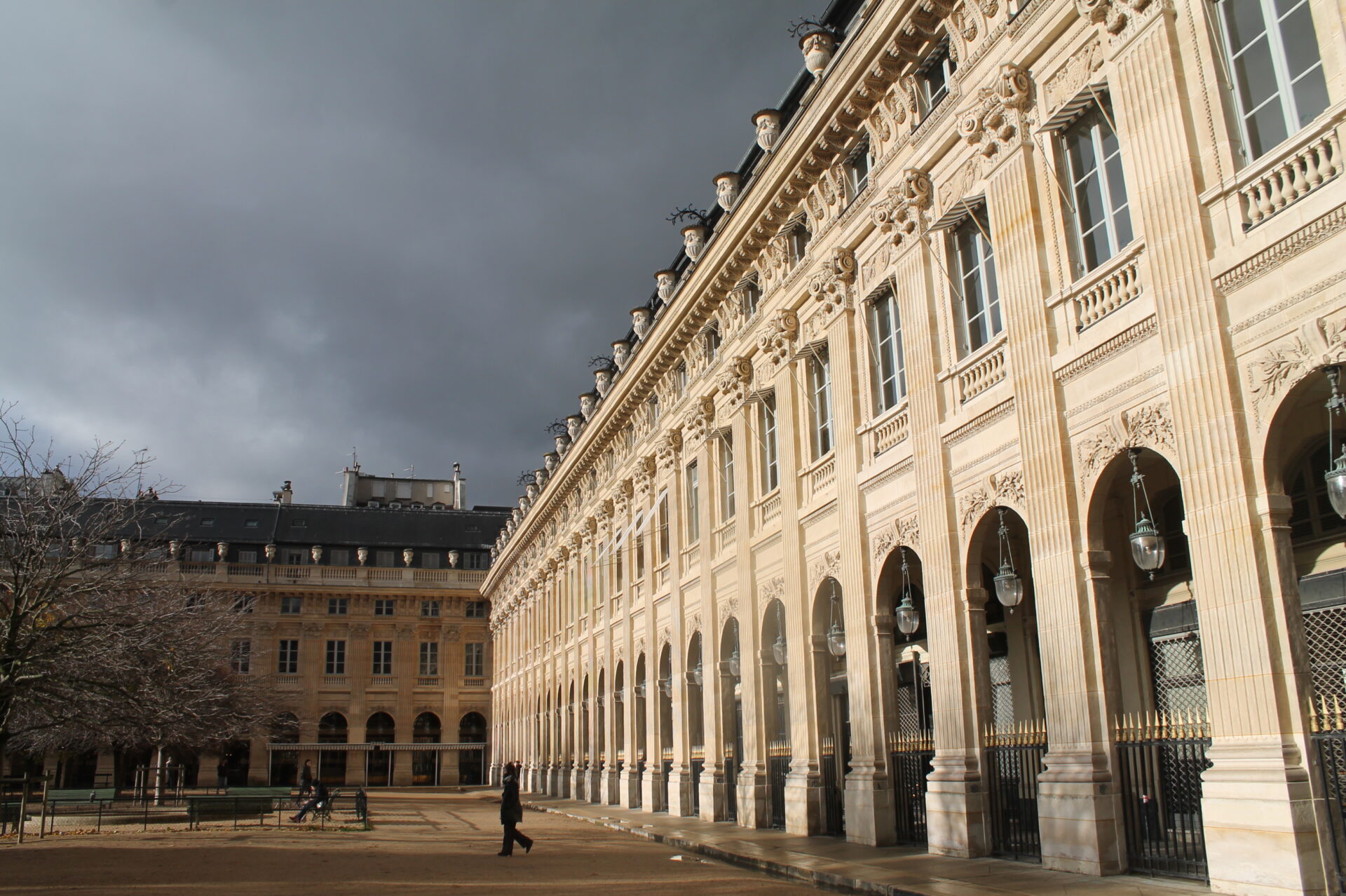
One of my favorite film locations is the Jardin du Palais Royal, in one of the oldest neighborhoods of Paris, where scenes for Mission Impossible, The Da Vinci Code, Interview with a Vampire, and others were shot. A must-watch movie shot there is La Revolution Française, in which actor François Cluzet, as Camille Desmoulins (the French Paul Revere), gives the cry that sparked the French revolution in the Palais Royal, which is little changed since that fateful day over two centuries ago.
Midnight in Paris has too many Paris locations to name, but the most memorable is Saint-Étienne-du-Mont church, at the steps of which Owen Wilson gets picked up by a mysterious car to travel into the past. The movie Amélie gives us such a delightful fairytale version of Montmartre that even the biggest curmudgeon would be hard-pressed not to smile with child-like glee. The Café Des Deux Moulins where Amélie worked has been a Set Jetting destination since the movie launched a generation of francophiles in 2001.
Paris Film Tours
While there are pretty comprehensive movie maps that you can use to look up your favorite French film locations, I recommend taking a private movie tour if you’re a Paris-loving cinephile. Ciné-Balade, the first Paris tour operator focused on films, brings these French film locations to life and allows you to re-watch the original movies with a renewed appreciation.
After majoring in film studies at the Sorbonne, Juliette Dubois got bored working in offices and decided she wanted to combine her love of films with her love of Paris. So she started giving movie tours of Paris, and her company Ciné-Balade was born. Juliette suggested we meet at the eclectic café lounge on the second floor of Cinéma du Pantheon over hot chocolate, surrounded by movie poster-lined walls, cabinets stocked with movie books, a glass coffee table that houses genuine César and Palme D’or awards, and vintage ’60s and ’70s furniture. Juliette noticed my awe and explained that the café was designed by Catherine Deneuve! The theater also runs the best cinema bookstore in Paris right next door at 15 rue Victor Cousin in the 5ème arrondissement. Juliette mentioned that a must-see for cinephiles visiting Paris is the Cinématèque Française, created in 1936 as the world’s first multi-use cinema cultural center. It is now housed in the Frank Gehry-designed former American Center in the 12ème arrondissement. In addition to showing films in its several screening rooms, the Cinémateque hosts director screenings, lectures, and events as well as the Miéliès Museum of Cinéma.
Dubois’ Ciné-Balade offers twenty movie tours of Paris. Each two-and-a-half hour tour costs €15 (less than the price of most movie tickets), and takes you to places where films were shot and shown, and where actors lived and socialized. Dubois gives an illustrated background presentation on each tour theme, as well as on French cinema history, often over a café or chocolat chaud at a neighborhood café.

One of Dubois’ favorite tours is “Where It All Started,” based around the Paris Opéra neighborhood. It was once the epicenter of the nascent French film industry, and the place where the Lumière Brothers held the world’s first movie projection at the Hotel Scribe. The magical Théâtre de l’Athénné in the Square de l’Opéra-Louis Jouvet (nestled down a side street alley one block from the Opéra Garnier) served as a key location in Martin Scorsese’s Hugo. One of Dubois’ most popular tours is the François Truffaut tour, which visits the places where the director grew up, hung out, was inspired, and filmed around Montmartre, Clichy, and the 9ème arrondissement.
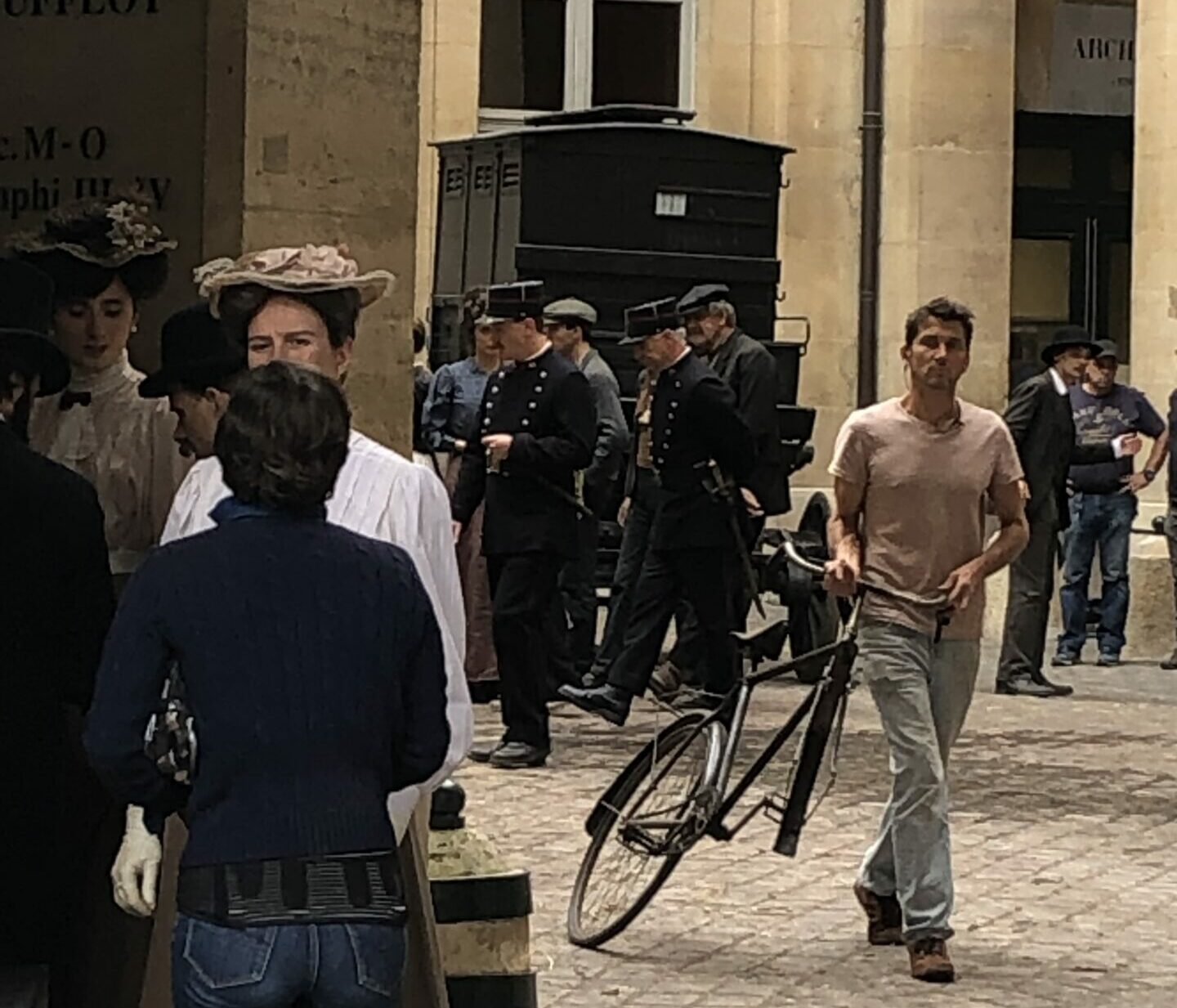
Being in Paris often feels like being on a movie set. Living in Paris, one often comes upon film crews shooting on location, and when the street is filled with actors in period costume and horse drawn carriages, it feels like you’ve stepped through a time portal into the past. The camera loves Paris –that breathless beauty simply makes it a hard-to-beat backdrop. Enjoying the Paris of the movies and taking in some of its countless film locations offers a new way to see and appreciate this timeless city, which is always ready for her close-up.
Philip Ruskin is an External Lecturer (ESSEC Bus. School), Consultant (food & travel marketing), writer, drummer and regular contributor to Frenchly. He loves to bike around his adopted hometown of Paris. Find him here, on Instagram. Photos by the author except where indicated.

